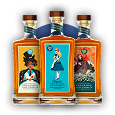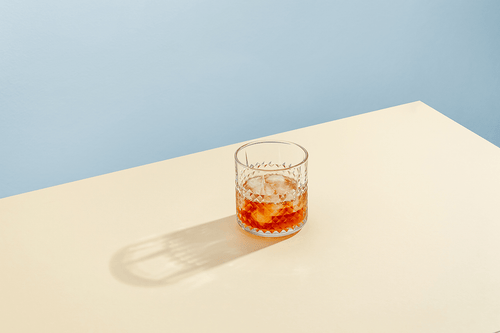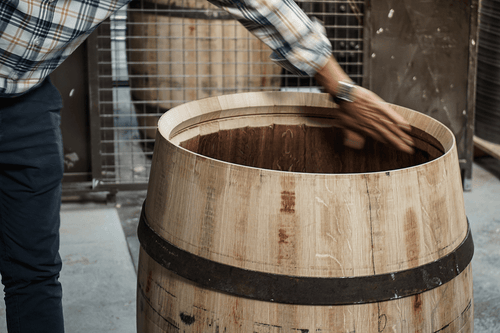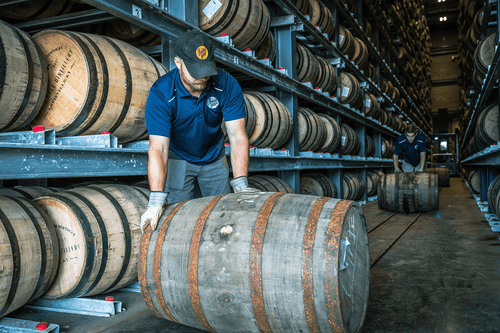History Of The Mint Julep
HISTORY OF THE MINT JULEP
When the weather turns warm, you can expect to see more mint juleps in the hands of home mixologists and bar patrons. The frosty, perspiring cup with its mound of ice and sprig of mint peeking over the brim represents pure refreshment and well-executed simplicity. These characteristics may be why the mint julep is among the traditional cocktails that remain popular today.

What is a Mint Julep?
Often associated with the Kentucky Derby, the mint julep is one of the great classic cocktails and a common hot-weather favorite. Like many classics, it consists of only a few ingredients. Whiskey is the spirit base, and it's flavored with mint and sugar and diluted with water, often only in the form of ice. Traditionally served in a silver cup, the drink is only mildly sweet. The sugar accentuates the natural syrupy quality of the whiskey, and the freshness of the mint on the palate enhances the cooling effect of the chilled cocktail.
The History of the Mint Julep
The mint julep has roots in ancient Persia, where, from the third to the seventh centuries, one might have heard of "gulāb," a kind of royal rosewater bath. Come the ninth century, this rosewater concoction had become a remedy for respiratory and stomach ailments. As a medicine, it entered other cultures and evolved into different terms — "julab" in classical Arabic and "julapium" in Latin. In the Mediterranean region, mint became more commonly used than rose petals due to the herb's abundance.
By the 1600s, the term "julep" had entered Middle English via Old French, where it made its mark on the language and literature of the time. The poet John Milton described a "cordial julep" as "spirits of balm and fragrant syrups mixed." In the following century, Dr. Samuel Johnson defined a "julap" in his Dictionary of the English Language, describing it as an "extemporaneous form of medicine made of simple and compound water sweetened."
The drink's primary application was medicinal into the 1700s. By then, American settlers in Virginia had established the practice of combining spirits with sweetened water and mint to produce a more pleasant-tasting beverage. The julep was then a high-society drink enjoyed in silver stemware, typically made with brandy or rum, as the wealthy were the only ones with regular access to ice. At this time, the drink often featured fruit and was commonly taken during breakfast.
As the 1700s progressed and Americans won their independence, they found themselves with an abundance of corn and rye that would soon fuel a budding distilling industry. Kentucky, for example, was among the states where corn grew abundantly. This, along with the state's limestone water, helped give birth to Kentucky bourbon. By the early 1800s, bourbon had supplanted rum and brandy among the state's julep crowd. The popularity of the new bourbon-based mint julep gained the favor of the state's senator, Henry Clay, who later introduced the drink at a bar in Washington, D.C., in 1850.
With the primary components of the modern mint julep in place, the drink became a fairly common fixture of warm-weather social events in Kentucky, including horse races. The beginnings of Kentucky equine racing more or less aligned with that of the mint julep on American soil. The 1790s saw an increase in the number of mile-long oval racetracks in the state, and by the 1820s, winning jockeys were receiving silver cups as prizes. In 1875, Kentucky initiated what would become its most well-known sporting event: the Kentucky Derby. Then, in 1939, the mint julep became the event's official drink.
Mint Julep Ingredients and Variations
Though the measurements may vary to some extent, traditional recipes for the mint julep are fairly consistent. Bourbon is the whiskey of choice, combined with spearmint, sugar, and ice. There are some variables concerning two of the ingredients. First is the sugar. Some argue for simple syrup, a solution consisting of equal parts sugar and water, claiming that it allows for a more integrated fusion with the other ingredients. Others prefer granulated sugar, particularly sugar cubes. The idea here is that the grittiness of the sugar assists with the muddling, allowing you to extract maximum mintiness from the leaves.
The other point of contention is the ice — shaved versus crushed. Each imbues the drink with its own character. Shaved ice is likely to dilute faster and integrate to some extent with the liquid, while crushed ice more reliably holds its structural integrity. Your choice in this regard may affect both the drink's strength and its texture.
The base mint julep recipe can also serve as a canvas for variations. Some alternative versions incorporate the pre-bourbon practice of adding fruit during the muddling stage. Popular fruit infusions include blackberries, raspberries, strawberries, and watermelon. Other variations may involve the addition of bitters, citrus, liqueurs, or sparkling wine.
The Types of Whiskey
When it comes to mint juleps, bourbon is the traditional spirit. Some would say it's the only liquor that belongs in the drink. There's often some disagreement concerning what type of bourbon is ideal — high-rye or high-wheat. It all comes down to your preference. If you like a spicier kick, try a high-rye bourbon. If sweeter and smoother is your preference, go for a high-wheat variety. You can even choose an in-between brand that gives you a balanced combination of both sweet and spicy notes.
The Mint Julep Cup
So, what is a mint julep served in? As mentioned earlier, winning jockeys used to receive silver cups as prizes. Thus, silver cups became the traditional mixing and serving vessel for mint juleps. Today, traditional julep cups are made of sterling silver or pewter, though stainless steel and copper are common alternatives. Using a metal vessel produces the signature frost on the outside of the cup and gives the impression, if not the reality, of a drink that stays colder for longer.
That being said, it's not uncommon for mint juleps to be served in glasses. Some establishments simply use glass versions of julep cups, while others use different barware altogether, such as a Collins, highball, or rocks glass.
The classic mint julep may consist of only a few ingredients, but it also contains more than a thousand years of history spread across multiple continents. As summer approaches, consider being among the many who continue the tradition of sipping this frosty, refreshing beverage to cool off.
If you are looking for a great wheated bourbon, consider Rabbit Hole's Dareringer Kentucky Straight Bourbon Whiskey (finished in PX Sherry casks) - or - for a high rye American whiskey, consider using Boxergrail
Want to make one? Here is a recipe for the Best Mint Julep Ever. Period.






















